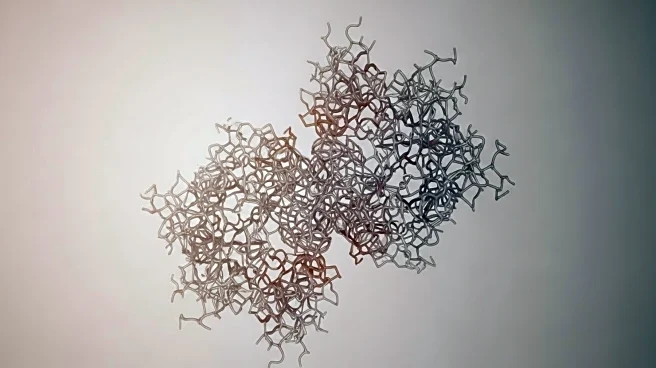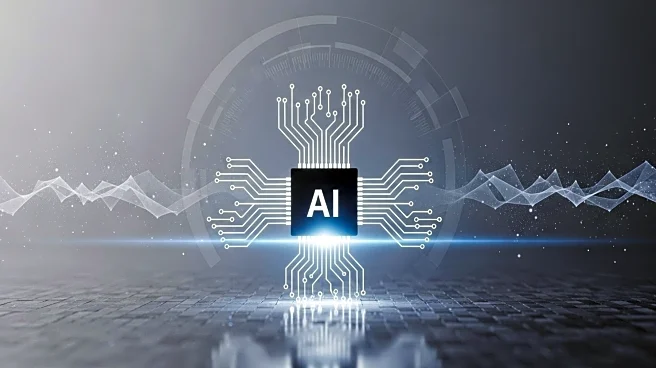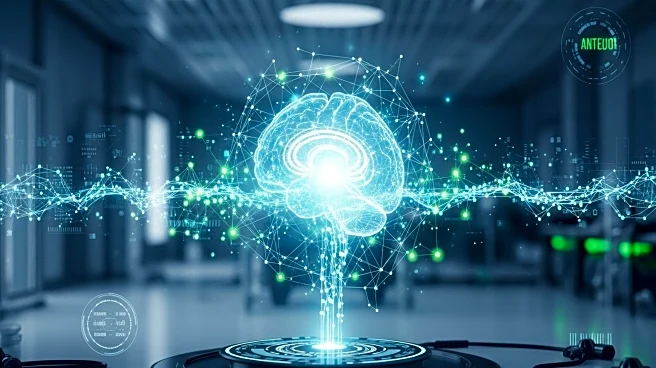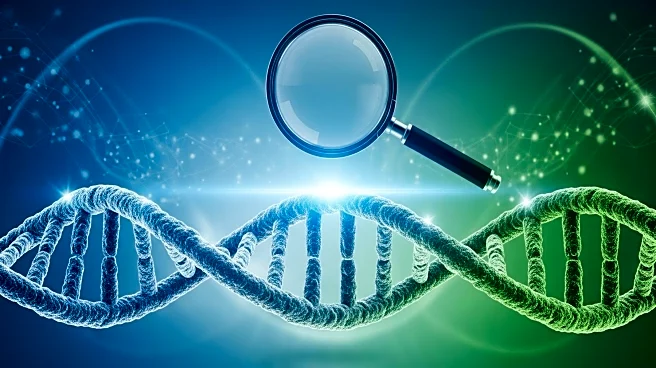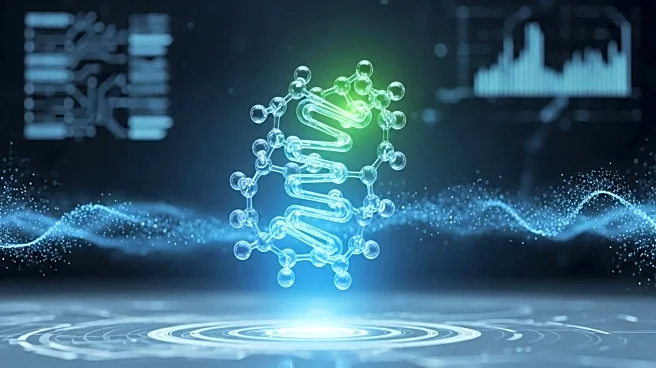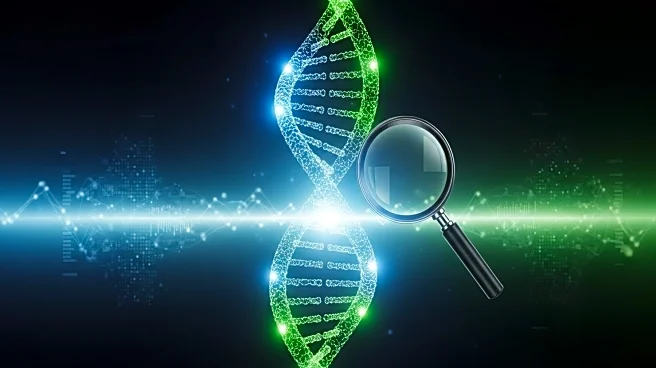What is the story about?
What's Happening?
Researchers at Harvard and Northwestern University have developed a machine learning framework to design intrinsically disordered proteins (IDPs), which make up nearly 30% of the human proteome. Unlike traditional methods that rely on 3D structural templates, this approach uses automatic differentiation and gradient-based optimization to simulate and adjust amino acid sequences. The framework allows for the design of proteins with custom properties, such as molecular loops and environmental sensors, without extensive experimental datasets. This innovation could deepen understanding of IDPs' roles in biological processes and therapeutic applications.
Why It's Important?
The ability to design IDPs with specific functions represents a significant advancement in protein engineering. IDPs play crucial roles in cellular signaling and assembly, acting as flexible connectors or switches. By understanding and manipulating these proteins, researchers can potentially develop new therapies for diseases where IDPs are involved. This approach also demonstrates the power of combining machine learning with physical simulations, offering a more generalizable method for protein design that could extend to other biomolecules like RNA and DNA.
What's Next?
Future research may focus on expanding this framework to other complex biomolecules, enhancing the understanding of their flexible roles in biological systems. The method could lead to breakthroughs in drug development, particularly for conditions linked to IDP dysfunction. Researchers might also explore collaborations with pharmaceutical companies to apply these designs in therapeutic contexts. Additionally, advancements in computational power and algorithm efficiency could further refine the design process, making it more accessible and widespread.
Beyond the Headlines
This development challenges traditional views of protein structure-function relationships, emphasizing the importance of disorder in biological systems. It raises questions about the limitations of current AI models in predicting non-structured proteins and the potential for new computational approaches. The research also highlights the interdisciplinary nature of modern scientific inquiry, combining insights from engineering, biology, and computer science to tackle complex problems.
AI Generated Content
Do you find this article useful?
